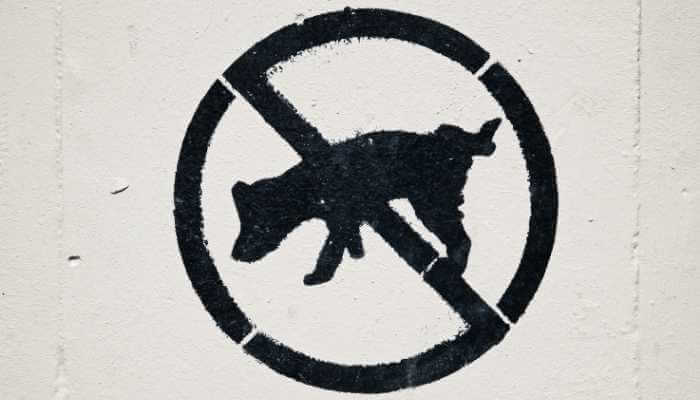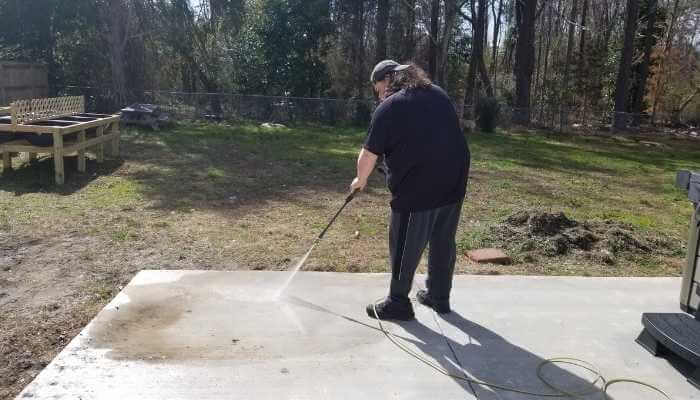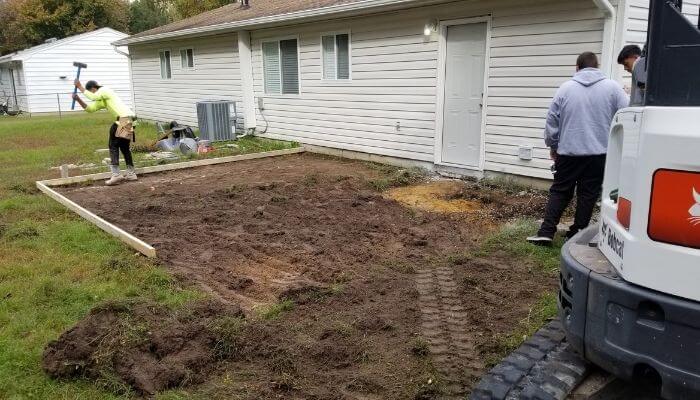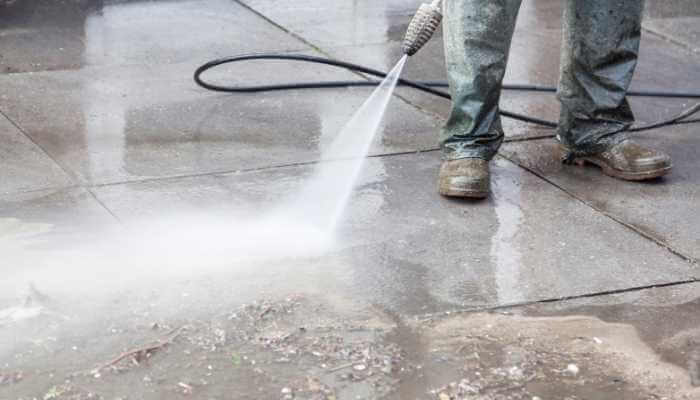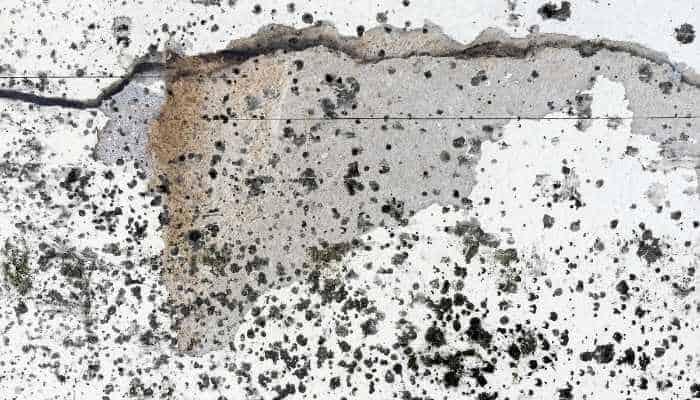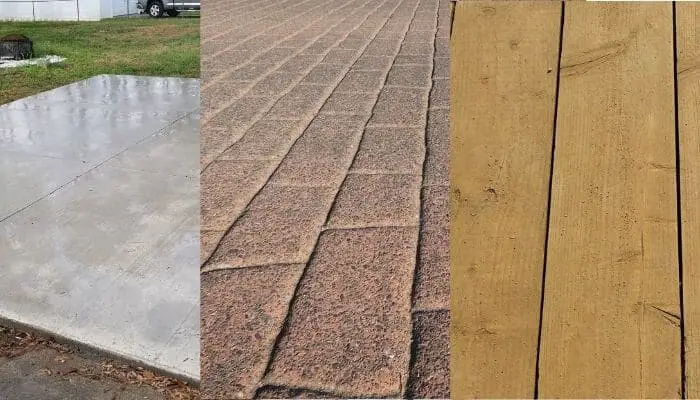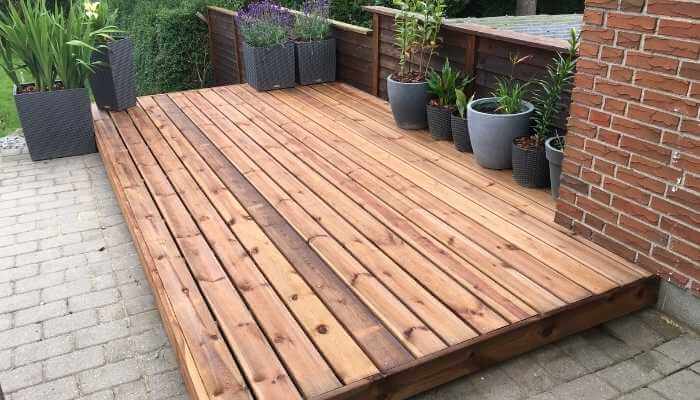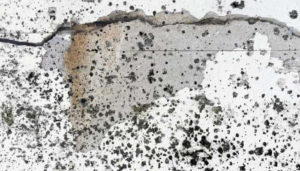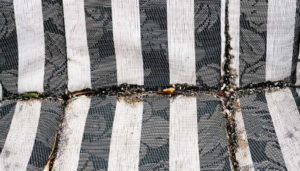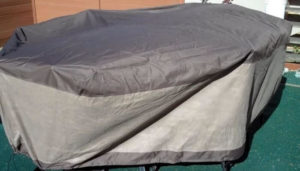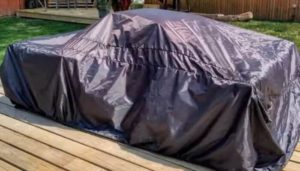
This isn’t just about a stain. It’s about a smell. Concrete is porous so that stain isn’t just on the surface. Specific methods and products are available to eliminate the visual evidence and the scent made by this particular stain.
There is a three-step process for treating urine stains on concrete:
1. Deep clean the stains with natural or chemical cleaners that specifically treat pet urine
2. Once the urine stain is cleaned, use an enzymatic cleaner or treatment
3. Set good habits for your pet & add deterrents to the outdoor space.
Don’t let your pet’s natural urges become a real mood killer for your outdoor space. Know how to clean up after your pet properly and discourage those pets from returning and causing problems in your outdoor spaces ever again. Let me tell you how!
The Best-Case Scenario & the Simple Solution
I wanted to take you through the scenario of catching the urine stain immediately after it happens. It’s possible you can get away with treating just that area with a product like Simple Green (Amazon link). It’s not just a cleaner but also enzyme-based. So it might be able to eliminate both the stain and the odor all at once.
These stains/odors must be cleaned first and then treated with an enzyme-based product with live bacteria to counter the urine and feces odor left behind.
First, remove any crystalized, solid urine or feces from the area to remove urine stains from the concrete. Follow the directions on the chosen product, and apply it to the stained area. You must let that treatment sit for at least ten minutes, maybe more per the product guidelines.
Why? It needs to soak into the porous surface of the concrete to get to the deeper urine.
How to Clean Up Your Patio After Your Pet Has Done Their Business
This is mainly for masonry or concrete and cement, but it can also be used on wood. A vinegar and water solution doesn’t just eliminate odors from where a dog has already urinated and is a natural deterrent. I’m not overly fond of the smell, though. And if it’s going in your outdoor living space, consider that.
How to Clean Simple Pet Urine Stains
You will need either of the following:
- 2 cups Hydrogen Peroxide
- 2 teaspoons Baking Soda
- 1 teaspoon Dawn Dish Detergent
OR
- 2 parts Vinegar
- 1 part Baking Soda
- 2 parts Hot Water
Whichever solution you choose, be sure to mix the different ingredients well before applying. Spread these solutions over the stoned areas and let them soak in well for a few minutes. Then, brush the stain with a stiff-bristled brush (not metal). Then rinse it off. You may want to use the solution all over the patio, especially if the treatment splotches the material.
How to Clean Old or Tough Pet Urine Stains
For concrete in particular, especially if the stains are old and hanging on, you may have to use something stronger.
If the urine situation is tough enough, a multi-step process using a mixture of trisodium phosphate (TSP) and water might need to be used.
TSP has been banned in some states, so check your local laws before purchasing any. Look for an environmentally-safe TSP alternative that can provide the same cleaning action without harmful effects.
Use 1/2 cup of TSP per gallon of hot water. Pour the hot mixture onto the locations you know urine to be and scrub with a nylon brush to work the TSP mixture into the concrete. Because the mixture will evaporate quickly, do this one area at a time (about three square feet maximum). Keep the area you are scrubbing wet for 10 minutes or more.
To rinse the concrete, pour clean hot water over the area. Use a wet vac or carpet cleaner to remove any standing water. Repeat this rinse two or three times. Then, let the concrete dry completely (24 hours is a reasonable time frame). This process removes the TSP mixture and helps remove any other pet urine left in the concrete.
Keep in mind that as the chemical processes with the urine, the smell may get worse because of the gas released by the uric acid crystals as the liquid reaches them. Once everything is dry, the odor should dissipate.
Remember that the TSP is caustic. Always wear gloves and eye protection.
How to Eliminate the Odor and Discourage a Repeat Performance
Once the urine stain is cleaned, there’s a second step – using an enzymatic cleaner. This uses ‘good’ bacteria, which produce enzymes to break down the uric acid crystals left by the first cleaning. The bacteria digest the crystals and break them into carbon dioxide and water.
Some examples of these kinds of cleaners can be found here on Amazon.
Most of the users (including yours truly) of these products agree on one thing – they aren’t too sure they like the smell of them. Considering what they’re doing, it’s no wonder that odiferousness is happening.
Always use these cleaners by the instructions given. Remember that many of them need to be left in place overnight so that the enzymes can soak in and work. Keep pets and children away from it. If you have to, cover the area being treated with a tarp.
Habits That Keep Pets from Urinating on Your Concrete Patio
If you know you have a problematic pet, you should immediately get some deterrents. Use natural deterrents or chemical enzymes to discourage your pet from using a spot you don’t want them to use. But you can also train them to go elsewhere.
When I move into a home, I take my dog to the part of the yard I want to designate as the “bathroom,” I make sure they do their business there. I make sure to take them back to that spot over and over when they are taken out. Even though it’s a fenced-in space, I want her to use one specific area for the waste spot.
It makes life easier when I have to pick up her feces during the summer. And we all know not to go over in that area without being wary. If she poops or pees somewhere else, I pick up that feces and return it to where I want her to remember to go. The smell drives the urge. Remember that.
Don’t leave feces or urine anywhere in your yard (or on your patio) you do not want your pet to return to. Where pee is concerned, you can hose the spots down that you do not want them to return to. You could also add something to that area that will annoy the dog.
If you want, use some of those deterrent sprays. Remember that they sometimes have off-putting smells, and not every solution works on every dog. Those sprays might also harm your plants.
Alternatively, you can mix coffee grounds and citrus peelings into your soil to keep dogs and cats alike from wanting to be anywhere near. Yes, coffee can be toxic to pets, but if you mix it well in the soil, they shouldn’t even want to be near it, little on ingesting enough to harm them. I’ve used this method cautiously (my dogs love to dig), and it worked for one dog, not the other.
What Plants Can Deter Dogs from Urinating on the Concrete Patio?
My dog hates lavender and rosemary. Think I won’t be planting a bunch of that around my patio? Anyway, I thought you might want a listing of plants that typically dissuade pets from getting too close to them. There are no guarantees, but you’re welcome to try.
Caninus Plants / Mint
Also known as the “Scaredy Cat Plant,” the Coleus or Plextranthus caninus plants are a deterrent for cats and dogs alike. They are all part of the mint family.
Mint has quite a strong smell, so this makes sense. The good thing about the specific type of plant that I have listed is that most humans can’t smell it unless they press the flowers and leaves to get the oil out.
Lemongrass/ Citronella
This is also a well-known bug repellant. There are actual Citronella plants, but I believe many people are referring to the Lemongrass plant. Either can be used to make citronella oil. It likes hot climates, so it may only last for part of the year.
Chili Pepper or Cayenne Pepper
I’m not sure of the effectiveness of the plant itself. My dog seemed to not care about its presence in my backyard. But the chili flakes can cause itching and inflammation to animals that get it on them (like almost any pepper with high capsaicin). And if they’ve had this experience, they may avoid the actual plants.
Lavender
I list this because lavender has a smell that most humans love. Look at how many products are out right now that include lavender. The claims are that the scent promotes calm and restfulness. I like the smell, so I don’t mind having it around me.
My dog isn’t so happy with it, so if I plant it in the areas of the yard that I don’t want her to be in – including around my concrete patio, it makes her think twice about getting close. Not all dogs will react similarly to this smell.
Most dogs don’t like the smells associated with the plants I’ve listed, but there’s always the oddball. So, you may have to experiment. If the place a dog likes to urinate happens to be just off the concrete and not on it, you can always consider using mulch as a deterrent as well.
In Conclusion
Pets are individual creatures with their own personalities and ways of doing things. But that’s not the only way they can differ. What some dogs hate and try to avoid, others seem apathetic to. So, finding a deterrent that works may take a while.
In the meantime, you have my instructions on treating the stains that may be coming to your outdoor space and some suggestions on habits to work on. Good luck!
Do you have a different kind of stain on your concrete to worry about? Check out my article that covers The Best Ways to Clean your Concrete Patio.
